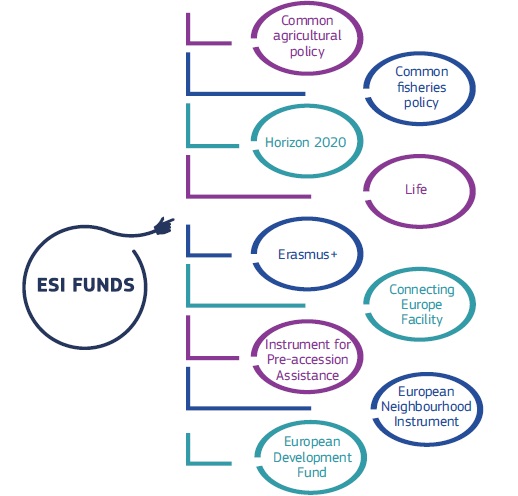The EU BUDGET is negotiated for periods of 7 years, currently corresponding to the period 2014-2020. Each 7 years allocation is called Multiannual Financial Framework (MFF). The budget approved for this MFF 2014-2020 period is €1.082 billion.
The 2018 EU budget is set at €160 billion, while €163 billion and €168 billion are expected for 2019 and 2020.
Any information related to the European budget and MFF can be found in the official website of the European Commission, topic Budget.
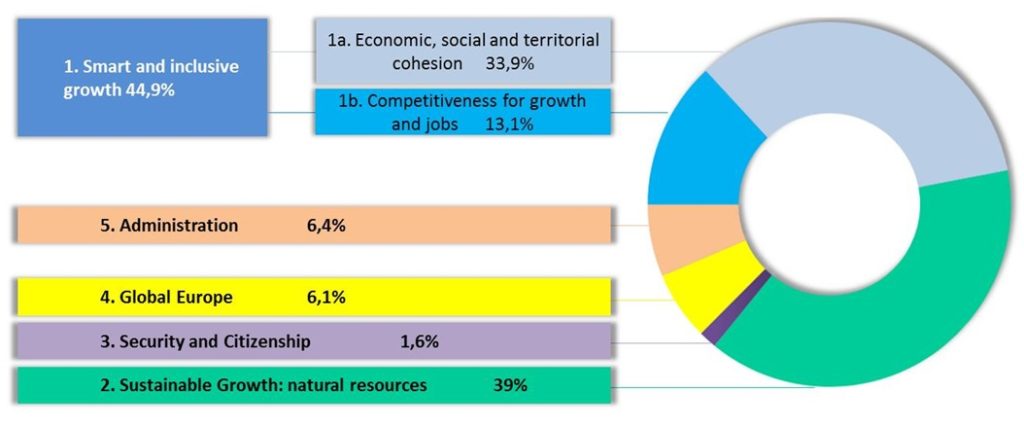
The EU priorities of investment
Even if the MFF budget is allocated in different management bodies, funds or institutions, every euro is distributing among 5 defined Headings, which stablish the general EU priorities of investment:
Smart and inclusive growth
Sustainable Growth: natural resources
Security and Citizenship
Global Europe
Administration
The Cooperation Budget
In terms of access to European Funds for citizens, in the MFF 2014-2020 the main cooperation and funding program of the EU are:
- COHESION POLICY: 3 Structural and Investment Funds (ESIF)
- RESEACH PROGRAMMES: Horizon 2020
- OTHER PROGRAMMES: SME, LIFE, ERASMUS, CITIZENs
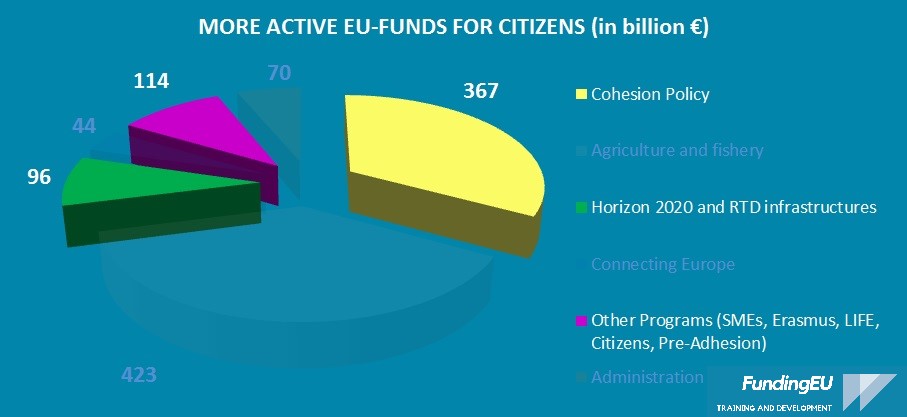
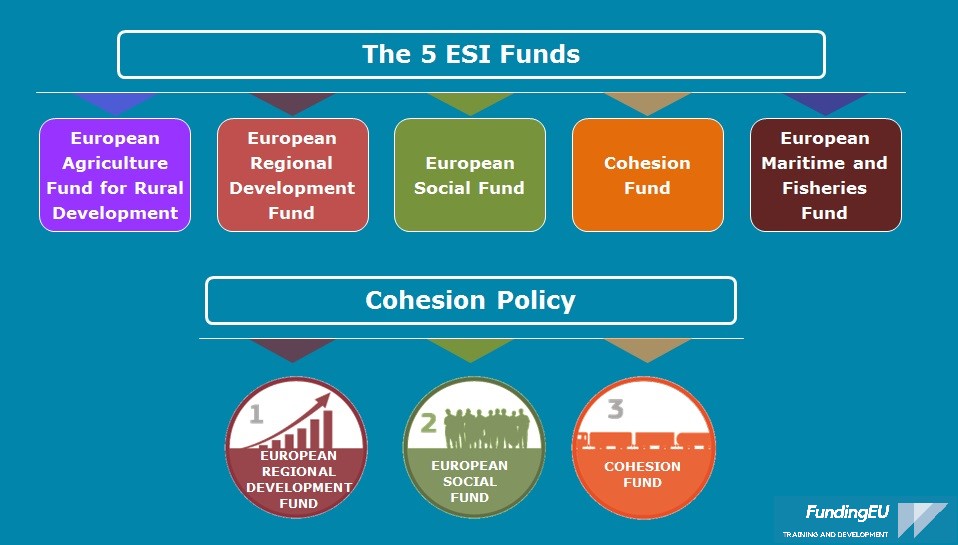
The Cooperation Budget: Cohesion Policy
Europe has 5 European Structural & Investment Funds (ESI Funds), which are the main Europe investment tool, with 454 billion euros allocated in 535 programmes.
The EU Cohesion Policy is part of the ESI Funds, and for the period 2014-2020 is goes over 1/3 of the EU budget
There are 5 European Structural & Investment Funds (ESI Funds), and 3 of them correspond to the Cohesion Policy:
European Regional Development Fund (ERDF) – regional and urban development
European Social Fund (ESF) – social inclusion and good governance
Cohesion Fund (CF) – economic convergence by less-developed regions
Cohesion Policy is used to reduce disparities in the development of the EU regions.
The article 174 Treaty of Lisbon (2010) defines the Cohesion concept: “the Union shall develop and pursue its actions leading to the strengthening of its economic, social and territorial cohesion. In particular, the Union shall aim at reducing disparities between the levels of development of the various regions and the backwardness of the least favoured regions‘.
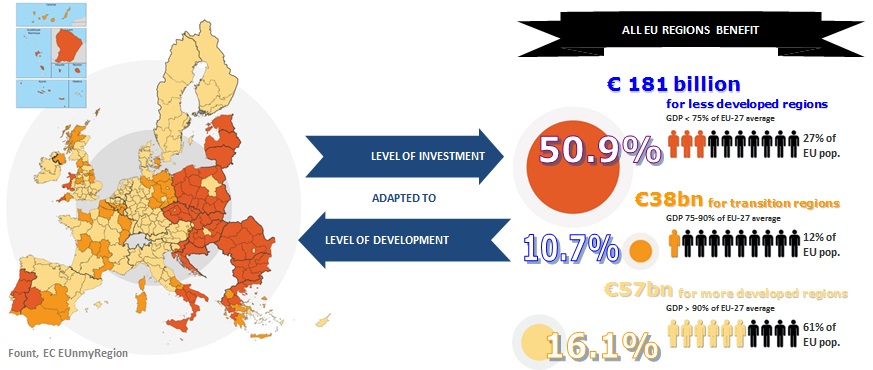
The bulk of Cohesion Policy funding is concentrated on less developed European countries and regions in order to help them to catch up and to reduce the economic, social and territorial disparities that still exist in the EU.
These figures are based on 2016 data, but updated information is published regularly by the European Commission in the site “The EU’s main investment policy”
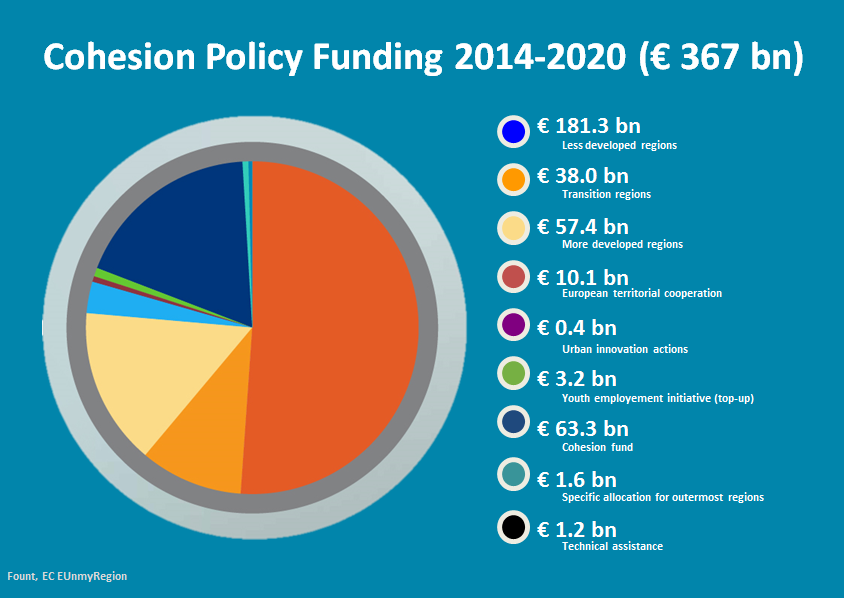
These figures are based on 2016 data, but updated information is published regularly by the European Commission in the site “The EU’s main investment policy”
EU builds synergies between the ESI Funds and the rest of EU instruments and cooperation Programmes.
